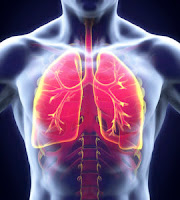Reset sleep cycle with these tips
There are many reasons why a person’s sleep cycle can be disrupted. Work shifts, time zone changes, and weather changes can lead to an erratic schedule. Lisa M. Cannon, M.D., explains that to keep up with a healthy circadian rhythm, one must build up healthy habits that will allow the body to rest and wake at the most suitable time. Here are some tips for retuning the body’s sleep cycle.
Tweak the body’s sleep schedule bit by bit
According to sleep experts, attempting to sleep an hour earlier than what the body has gotten used to might lead to more frustration. Starting the change by sleeping 15 minutes earlier might be easier to accomplish. For those who want to make long-term changes can add 15 more minutes every two or three days until their body gets used to sleeping at their desired time.
Avoid naps
Lisa M. Cannon, M.D., suggests skipping naps if one feels tired during midday. Some people end up napping longer than 15 minutes, which can hinder them from going to sleep at their desired bedtime. For those who feel the need for a power nap, going out for a walk or doing some short exercises can give them the energy boost they need at daytime while allowing their body to rest earlier at night.
Exercise during the day
Those who started a workout habit during daytime reported that they were able to improve the quality of their sleep. This is also true for those who went out for a run or walk during the morning. Sunlight and exercise tune the body to its peak working state, allowing the body to understand that nighttime means rest. For those who want to reset their sleep cycle, being consistent with their workout and sleeping time will contribute to a lasting change.
Lisa M. Cannon, M.D., is a board-certified physician specializing in pulmonary disease, critical care, and sleep medicine. She obtained her medical degree from New York Medical College and received her board certifications in critical care in 1998, in internal medicine in 2006, and pulmonary disease in 2007. For reads like this, visit this page.
 |
Image source: Verywellhealth.com
|
 |
Image source: Pixabay.com
|
According to sleep experts, attempting to sleep an hour earlier than what the body has gotten used to might lead to more frustration. Starting the change by sleeping 15 minutes earlier might be easier to accomplish. For those who want to make long-term changes can add 15 more minutes every two or three days until their body gets used to sleeping at their desired time.
Avoid naps
Lisa M. Cannon, M.D., suggests skipping naps if one feels tired during midday. Some people end up napping longer than 15 minutes, which can hinder them from going to sleep at their desired bedtime. For those who feel the need for a power nap, going out for a walk or doing some short exercises can give them the energy boost they need at daytime while allowing their body to rest earlier at night.
Exercise during the day
Those who started a workout habit during daytime reported that they were able to improve the quality of their sleep. This is also true for those who went out for a run or walk during the morning. Sunlight and exercise tune the body to its peak working state, allowing the body to understand that nighttime means rest. For those who want to reset their sleep cycle, being consistent with their workout and sleeping time will contribute to a lasting change.
Lisa M. Cannon, M.D., is a board-certified physician specializing in pulmonary disease, critical care, and sleep medicine. She obtained her medical degree from New York Medical College and received her board certifications in critical care in 1998, in internal medicine in 2006, and pulmonary disease in 2007. For reads like this, visit this page.



Comments
Post a Comment